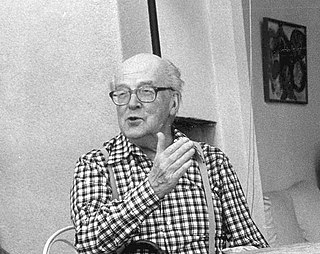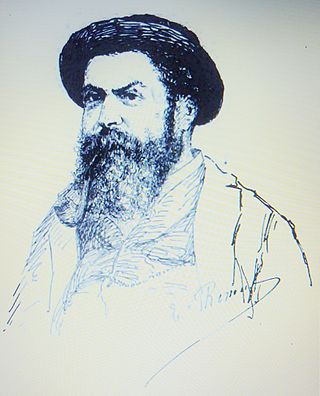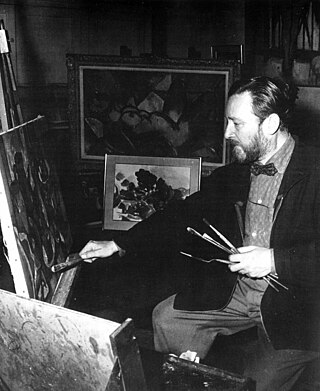Charles Mozin (Paris, March 12, 1806 - Trouville-sur-Mer, November 7, 1862) was a French painter, draftsman and lithographer.
Contents

Charles Mozin (Paris, March 12, 1806 - Trouville-sur-Mer, November 7, 1862) was a French painter, draftsman and lithographer.

Born into a family of musicians, his brother, Théodore Mozin, was second grand prix de Rome in musical composition in 1841, was a composer and professor at the Conservatoire Musical de Paris; his father, composer Benoit Mozin, was also a professor there and introduced his son Charles. But his true passion was painting. Charles Mozin entered the workshop of Xavier Leprince where he participated in the Embarquement des bestiaux à Honfleur. He discovered Trouville-sur-Mer in 1825.
In 1828, by introducing his friend Henri Rittner, a print dealer to Adolphe Goupil, he gave rise to the house Rittner & Goupil.
He married Pauline Coïc, daughter of Julien Désiré Abel Coïc, on May 11, 1829 [1] and had two daughters. He settled in Trouville in 1839, building his house on a plot of land purchased in the Place de la Cahotte, a building that still exists.
Mozin was elected to the Trouville City Council in 1843 and participated in the development of the city.

He also built later the tour Malakoff, meeting point for lovers of the Roches Noires. Discoverer of Trouville, according to Yves Bayard, [2] Charles Mozin sold his first painting to the Duchess of Berry.
He died in 1862 and his body was buried in the Montmartre cemetery in Paris. The sale of the atelier took place in 1865 at the Hotel Drouot and consisted of two hundred and seven paintings, drawings, watercolors and models of boats that served as models.
Musician and composer Charles Malherbe (1853-1911) was his grandson and painter Fernand Piet (1869-1842) his great-grandson.
Engraver Frederic Martens was the author of large aquatints taken from his paintings.

Eugène Louis Boudin was one of the first French landscape painters to paint outdoors. Boudin was a marine painter, and expert in the rendering of all that goes upon the sea and along its shores. His pastels, summary and economic, garnered the splendid eulogy of Baudelaire; and Corot called him the "King of the skies".
Trouville-sur-Mer, commonly referred to as Trouville, is a city of 4,603 inhabitants in the Calvados department in the Normandy region in northwestern France.

Berck, sometimes referred to as Berck-sur-Mer, is a commune in the northern French department of Pas-de-Calais. It lies within the Marquenterre regional park, an ornithological nature reserve.
The Compagnie des chemins de fer de l'Ouest, often referred to simply as L'Ouest or Ouest, was an early French railway company which operated from the years 1855 through 1909.

The Côte Fleurie stretches for approximately 40 km (25 mi) between Merville-Franceville-Plage, at the mouth of the Orne river, opposite Ouistreham to the west and Honfleur on the Seine estuary in the east. It forms part of the eastern Basse-Normandie coast on the English Channel to the north of the Pays d'Auge in the Calvados department. The coast between the towns of Trouville and Honfleur, although part of the Côte Fleurie, is named Côte de Grace. Dives-sur-Mer is on the Côte Fleurie but possesses no beach or seafront. The Côte de Nacre continues west from the Touques estuary.

Henri Eugène Augustin Le Sidaner who was a contemporary of the Post-impressionists, was an intimist painter known for his paintings of domestic interiors and quiet street scenes. His style contained elements of impressionism with the influences of Édouard Manet, Monet and of the Pointillists discernible in his work. Le Sidaner favoured a subdued use of colour, preferring nuanced greys and opals applied with uneven, dappled brushstrokes to create atmosphere and mysticism. A skilled nocturne painter, he travelled widely throughout France and Europe before settling at Gerberoy in the Picardy countryside from where he painted for over thirty years.
Émile Signol was a French artist who painted history paintings, portraits, and genre works. Although he lived during the Romantic period, he espoused an austere neoclassicism and was hostile to Romanticism.

Louis Candide Boulanger was a French Romantic painter, pastellist, lithographer and a poet, known for his religious and allegorical subjects, portraits, genre scenes.

Jean Le Moal was a French painter of the new Paris school, designer of stained glass windows, and one of the founder members of the Salon de Mai.

Anders Osterlind was a French painter. He was the son of the painter Allan Österlind, and the father of watercolorist Nanic Osterlind.
The artist André Hambourg was a French painter of romantic compositions of Venice, luminous seascapes, and beach scenes.
Gaston Sébire was a French painter of seascapes, landscapes, still lifes and flowers.

Albert Lebourg, birth name Albert-Marie Lebourg, also called Albert-Charles Lebourg and Charles Albert Lebourg, was a French Impressionist and Post-Impressionist landscape painter of the Rouen School. Member of the Société des Artistes Français, he actively worked in a luminous Impressionist style, creating more than 2,000 landscapes during his lifetime. The artist was represented by Galerie Mancini in Paris in 1896, in 1899 and 1910 by : Galerie Bernheim-Jeune, 1903 and 1906 at the Galerie Paul Rosenberg, and 1918 and 1923 at Galerie Georges Petit.

Émile Renouf was a French painter and draughtsman of the realism-impressionism school.

Jean Dries was the name used by the artist Jean Driesbach, who was born on October 19, 1905, in Bar-le-Duc in Meuse, France and died in Paris on February 26, 1973. He was a Lorrain painter by birth and was born the year Fauvism appeared at the Salon d'automne. He became a Parisian painter when he studied under Lucien Simon at the Ecole des Beaux Arts in Paris, through his adventures in the "zone", setting up several studios before finally settling in the Île Saint-Louis at 15 quai d'Anjou.

Henri Michel-Lévy, was a French impressionist painter.

Eugène Lepoittevin, also known as Poidevin, Poitevin, and Le Poittevin, was a French artist who achieved an early and lifelong success as a landscape and maritime painter. His work ranged from erotic caricatures to massive battle scenes. His works are in the collections of many museums throughout France. He made many paintings set in and around the fishing village of Étretat, and in 2020 he was the subject of an exhibition and book, L'invention d'Étretat: Eugène Le Poittevin, un peintre et ses amis à l'aube de l'impressionnisme.

Paul Claude-Michel Carpentier was a French portrait, genre, history painter and author. He studied with Jean-Jacques Lebarbier (1738–1826) and briefly with Jacques-Louis David (1748–1825). Until 1824 he exhibited at the Salons under his family name LeCarpentier, but after 1824 shortened his last name to Carpentier.
Benoit François Mozin called le jeune was a French composer.
Jean-Baptiste de La Rose (1612-1687) was a French painter and draughtsman, specialising in decorating ships and producing paintings of ships and seascapes. His son Pascal de La Rose was also a painter.